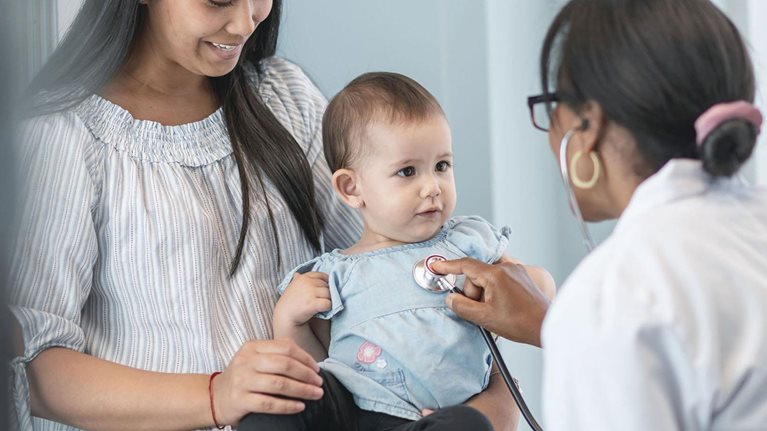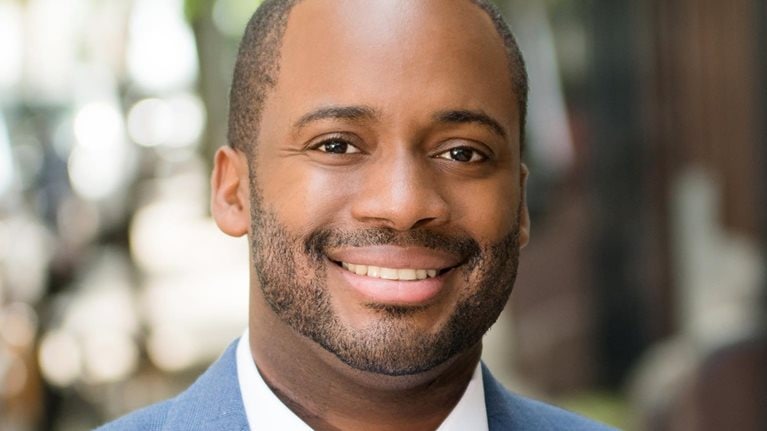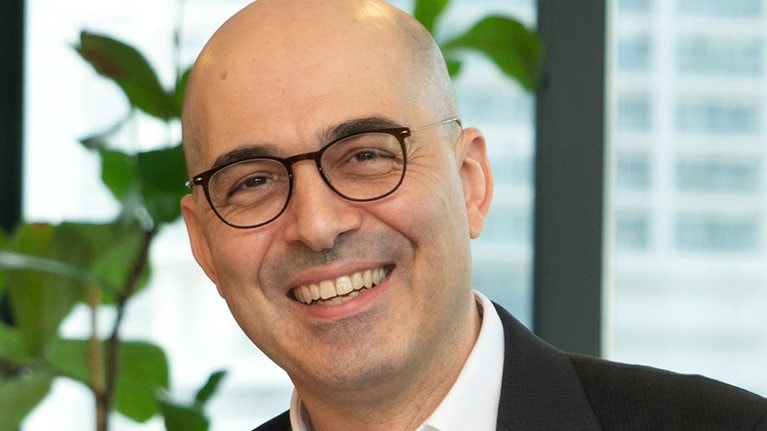In this episode of the McKinsey on Healthcare podcast, Daniel E. Greenleaf, president and CEO of Modivcare, talks with McKinsey partner Aneesh Krishna about eradicating zip code–based inequalities and improving health equity.
Modivcare is a technology-enabled healthcare services company that provides a platform of integrated supportive-care solutions for public and private payers and their patients, including nonemergency medical transportation, personal-care services, remote monitoring, and meals.
In this wide-ranging discussion, Daniel and Aneesh cover everything from how to address zip code inequalities to the recent Modivcare appointment of a chief diversity officer.
An edited and condensed transcript of the conversation follows.
Meeting the member where they are: What is the future of health equity?
Aneesh Krishna: You’ve previously spoken quite openly about growing up in a neighborhood that was similar to those you serve via Modivcare. What does health equity mean to you?
Daniel E. Greenleaf: For me, health equity means all of us having equal access to healthcare, regardless of one’s circumstances, zip code, economic situation, or level of support. My parents were extremely service oriented. My mother taught disabled children. My father was a military officer. They instilled a service mindset in me, which has been very important in terms of the career paths I’ve taken and what I’ve done in my career. I’ll also say that my high school was predominantly English as a second language—perhaps 50 percent of the population spoke English as a second language, and 20 percent were African American. I saw the barriers that individuals had to overcome to get to school, to support their families, and that in these circumstances, the expectations and the strains were in many respects more significant. So that experience shaped my world view—we’re not all given the same opportunity, and we’re not always in the best place to receive care. It made me ask the question, if that’s the case, what do we need to do collectively to address those issues? That’s really what Modivcare, in many respects, is about. We serve 30 million members, 9 percent of the US population and growing, and there is clearly a significant unmet need here, particularly in the supportive-care space.
Health equity means all of us having equal access to healthcare, regardless of one’s circumstances, zip code, economic situation, or level of support.
Aneesh Krishna: It’s clear that some of the experiences you had growing up have resulted in how you think about health equity now. As you mentioned, one of the key barriers in health equity is around the confusion that patients have on how to access healthcare, and this is particularly pronounced in some zip codes—your zip code could be the primary determinant of how you access healthcare. How can this be best addressed?
Daniel E. Greenleaf: We need to meet the member where they are in their health journey, and in some instances that means meeting them where they live. In some cases, it’s addressing the fact that they don’t have Wi-Fi plans, they have limited data access, or their plans are somewhat limited. They might have an older handset. So, we have to examine our member population and ask, what kind of solutions do we need to create? We believe technology matters, and Modivcare is spending $100 million on technology this year; however, the high-touch element isn’t going away. I think one of the mistakes, particularly with our patient population, is to assume they all have the same opportunity to access information remotely. For example, some of us have unlimited data plans, newer phone models, and access to Wi-Fi at home, but we cannot assume that everyone does. There are a lot of misperceptions about the patient population we serve. As a company, we need to create a surround sound approach that includes what caregivers do, what case managers do, what our remote monitoring personnel do, what transportation providers are noticing, for example. Data matters, and if we’re meeting a member where they are, data can help with the decisions they ultimately make. Community leaders are also important, as well as traditional and nontraditional marketing. It has to be a surround sound approach.
Aneesh Krishna: One of the things you’ve mentioned is having a unique perspective on your members given the breadth of services Modivcare provides. Could you elaborate a little bit more on what opportunities the use of data and analytics could bring?
Daniel E. Greenleaf: One of the opportunities we have is the length of service we provide for our members. For example, in personal care the length of services is often four years or more. If we think about PERS, which is personal emergency response system, the length of service tends to be three-and-a-half years. For vitals monitoring, it’s over two years. So, that’s one of the opportunities we have—this ongoing, very personal relationship with patients. However, the issue we run into is that we’re not working off of one platform, meaning, we have disparate and incomplete data sets. For example, the tech stack we’re going to market with is built off of legacy systems from 20 years ago. So we haven’t reached the level of sophistication we could around data. There’s more opportunity with having one platform—a single source of truth for the member.
Data collection in the home could also be valuable. We have a value-based care initiative under way with a large payer, in which we’re combining all four of our services, and we think some really interesting information will come from that. Our remote monitoring business is working with select populations, like diabetic patients for example, to provide a level of remote monitoring in the healthcare plan. Addressing our members in a holistic way is vital. Historically, we’ve said that transportation is going to be separate from meal delivery, personal care, vitals monitoring, medication management, etcetera. Now our belief is that we should be addressing it holistically. The partnering we’re doing with states and payers plays a role in this. The work we’re doing in terms of outcomes and engagement is playing a role in this. How we’re interacting with patients, our quality-of-life work, as well as our transportation partnerships all play a part in this. It all goes back to making sure we’re creating a holistic solution, that all of us are playing a role in data collection and analytics, and we’re moving toward a single source of truth, engaging data scientists where we can.
Want to subscribe to McKinsey on Healthcare?
Aneesh Krishna: In relation to health equity, could you provide some examples of how Modivcare is “walking the talk” with ground-level actions?
Daniel E. Greenleaf: COVID-19 has opened our eyes to examples of inequity such as vaccine deserts, the unfair distribution of vaccines, broadband deserts, pharmacy deserts, and food deserts, among other things. During COVID-19, we delivered more than two million meals pro bono. We provided more than 85,000 rides to caregivers. We brought more than 300,000 patients to their vaccine appointments and provided rides to more than 40,000 COVID-19 positive members. We provided more than 50 million rides a year to members who needed diabetic care, dialysis care, mental healthcare, or substance abuse treatment. Then we provided more than 30 million hours of care from a personal-care standpoint. So we stayed in our communities. We continued to do the work that needed to be done. Our corporate office didn’t shut down, because it was important for us to set the right example for our teammates—corporate wasn’t going to be at home when we asked people to go into homes or contact centers. We believe in this. We spent $1.5 billion in acquisitions to build out this organization during COVID-19, and we believe in the bets we’ve placed.
Aneesh Krishna: To be able to close the health equity gap with a large organization like Modivcare has to be a big part of your company culture. Could you talk a little bit about how this is reflected in the Modivcare culture and how you motivate and energize employees toward addressing the health equity challenge?
Daniel E. Greenleaf: First of all, if you want to galvanize an organization, what could be more important than addressing the health equity issues in our country? This is a significant opportunity for a country, a healthcare system, and a company. There is a real self-selection that goes on here in terms of the people who decide to work for us, and a lot of that is around the mission of the organization—equal opportunity of care and dignity regardless of your zip code. Many people in this organization have worked together before, which should tell you something—there are a lot of us who want to make this kind of difference. There’s real compassion in this organization. In one of the communities we serve, members don’t have physical addresses; they have coordinates. This is the kind of commitment we make as an organization in terms of getting care to people who otherwise wouldn’t receive it. We also spent a lot of time last year redesigning our purpose, vision, and values. Company culture is never static.
Aneesh Krishna: As you think about continuing to address the health equity gap, what are some of the biggest challenges you as an organization are facing, and how are you addressing those?
Daniel E. Greenleaf: Data are a big one. As I said, there are incomplete data sets, data that have never been evaluated, and there are regression analysis models that have never been done. We know there aren’t predictive models. We also know that we haven’t necessarily empowered, for example, caregivers, to the level that I think we could. We also know there are a lot of disparate parts—we’re still trying to figure out how to take the concept of a one-stop-shop for supportive care and put it into practice fully. Part of it is patients not knowing what’s available to them. It’s remarkable for me to look at the data on food delivery and how many patients don’t take advantage of it even though they’re eligible. Or remote monitoring. Or the fact that we estimate the demand for caregivers is 50 percent higher than we can supply. That is why we’re spending $100 million on technology this year—because we want to make our solution easy to work with. Labor is an issue because if the demand, even pre-COVID-19, was 50 percent higher than the supply, then we have a big gap. Nobody has really put the right combination of supportive-care products together; we’re the only one. So this is still an evolving process.
Aneesh Krishna: How do you see relationships and expectations with patients changing over the next few years?
Daniel E. Greenleaf: It’s going to be more consumer friendly. It’s going to be more data driven. It’s going to be more holistic. People are going to have easier access to services, and there’s going to be a lot more clarity around options. We also believe that caregivers who are going into the home could eventually act as “air traffic controllers” for the member and do a lot more. They could be performing at the upper end of their license. I think there is an enormous opportunity. For example, someone who could help coordinate food, remote monitoring, transportation, doctor visits, meal delivery, and also data collection or quality-of-life surveys. There’s a lot more that our community could be doing to extend the value of what we do.
Aneesh Krishna: Modivcare recently appointed a chief diversity officer. If another organization asked for your advice on whether to create such a role or not, what advice would you give them?
Daniel E. Greenleaf: I would say just do it and empower them. Give them the right breadth of ownership and the right level of support, and also understand and commit to learning as you go. This is a new frontier for most of us. We have to accept that we’re not going to have it all figured out. When our first chief diversity officer, Nathan Vaughn, joined us, I said to him, “You’re going to have to help me, and we’re going to learn together.” I would also say you can never communicate too much; you need to look at every avenue available for that communication.
Aneesh Krishna: What advice would you give other organizations about going all in on health equity?
Daniel E. Greenleaf: Number one, commit to ensuring that zip codes will not be the single most important predictor of health outcomes. Commit to that. It’s outrageous that we have adjacent zip codes where the average life expectancy differs by 15 years, and there’s nothing else, other than the zip code, that is determining this outcome.
I would also say that you need to ensure you’re forming and enhancing community partnerships. We do this through the Modivcare Foundation and Modivcare Academy. We’re going into communities and helping to build their businesses. So, it’s not just about elevating the health of these communities but also about ensuring we’re making the right economic investments.
You also need to make the right investments in technology. There is a lot of work to do on this, but we have a very unique opportunity right now to make a dent in this. This is a long journey, but we believe there has never been a better time to start.
Aneesh Krishna: Do you believe that health equity across the nation is possible? What would it take to get there?
Daniel E. Greenleaf: I wouldn’t do this unless I believed. I’m not sure if it will ever be 100 percent equitable, but could we get closer to 50 percent or move it up to 75 percent? I absolutely, unequivocally believe that is possible, and it’s why we do what we’re doing. So what is it going to take? It’s making sure that our federal government, our states, our payers, companies, communities, families, and patients all understand that they play a role in this and that we’re working together. We have to continue to find data that support a holistic, patient approach to underserved patient populations. You also need commitment—a committed organization, committed community, the federal government, payer group, state group, and so on. You have to have patients who want something different as well. Part of that is educating them on what can be different. I don’t want to lose sight of patient empowerment within this; it can’t be a paternalistic approach of coming in to save the world. We need to empower the patient and their families.
It’s outrageous that we have adjacent zip codes where the average life expectancy differs by 15 years, and there’s nothing else, other than the zip code, that is determining this outcome.
Aneesh Krishna: If you were able to make three changes in the world right now related to health equity, what would those be?
Daniel E. Greenleaf: The first would be to acknowledge the zip code issue. What we’ve done historically from a clinical perspective, from a supportive-care perspective, is not working, because if it was, we wouldn’t see these massive disparities in health outcomes related to where a person lives. The second is access. All of us deserve access to and dignity of care, which for me means meeting the member where they are. The third thing is, we’re all in this together—addressing health equity is a good thing to do, it is the right thing to do. We’re not all given the same opportunity, and if there’s unequal distribution, we need to solve it.
Aneesh Krishna: You’ve been the CEO of multiple companies. What is the lasting impact you would like to leave behind as the CEO of Modivcare?
Daniel E. Greenleaf: I want to be in a place where we’ve made a material impact on the well-being of underserved patient populations and where a patient’s zip code is not the single most important predictor of a health outcome.


